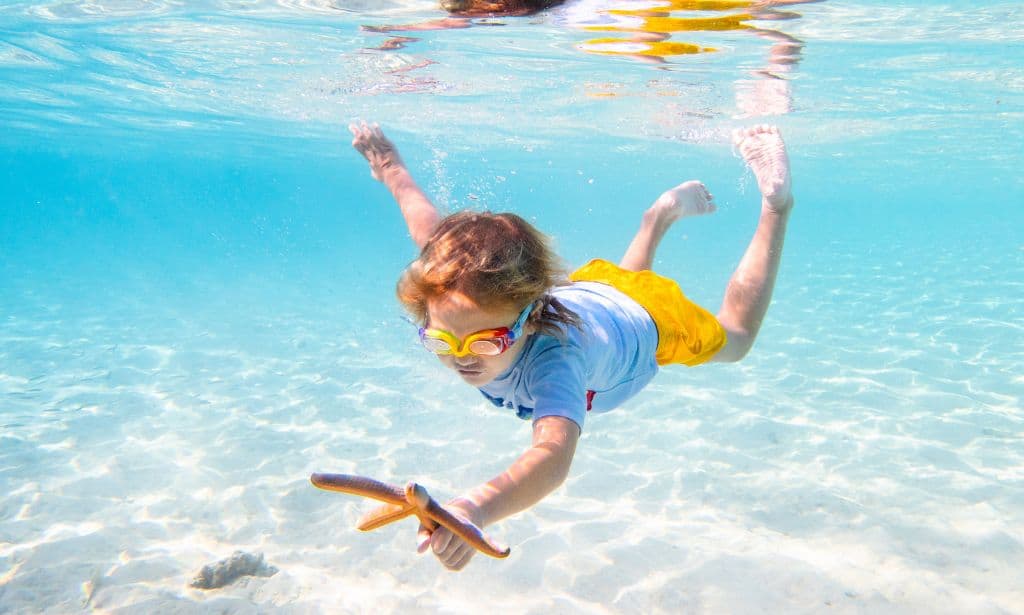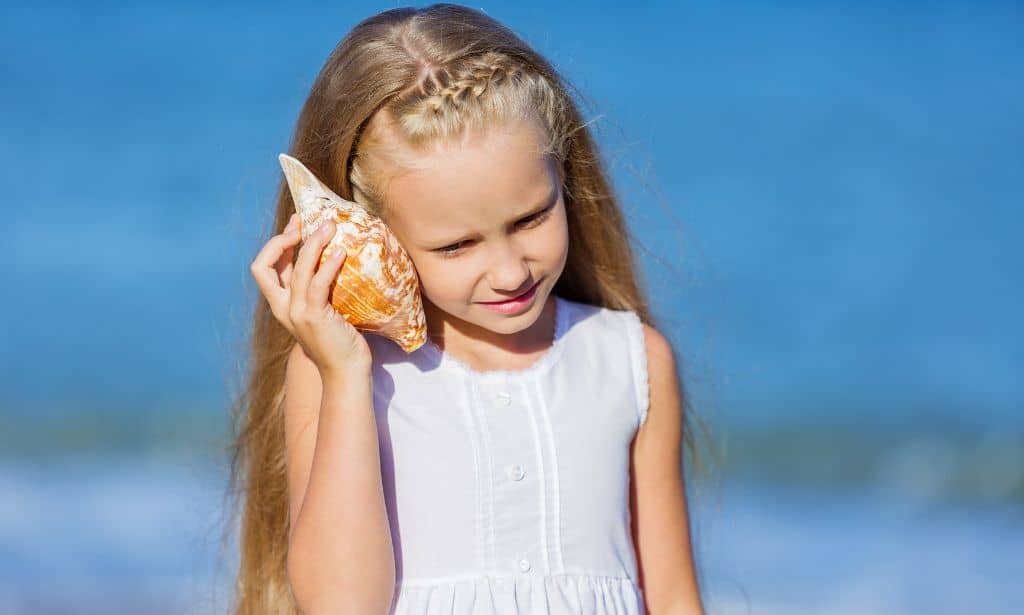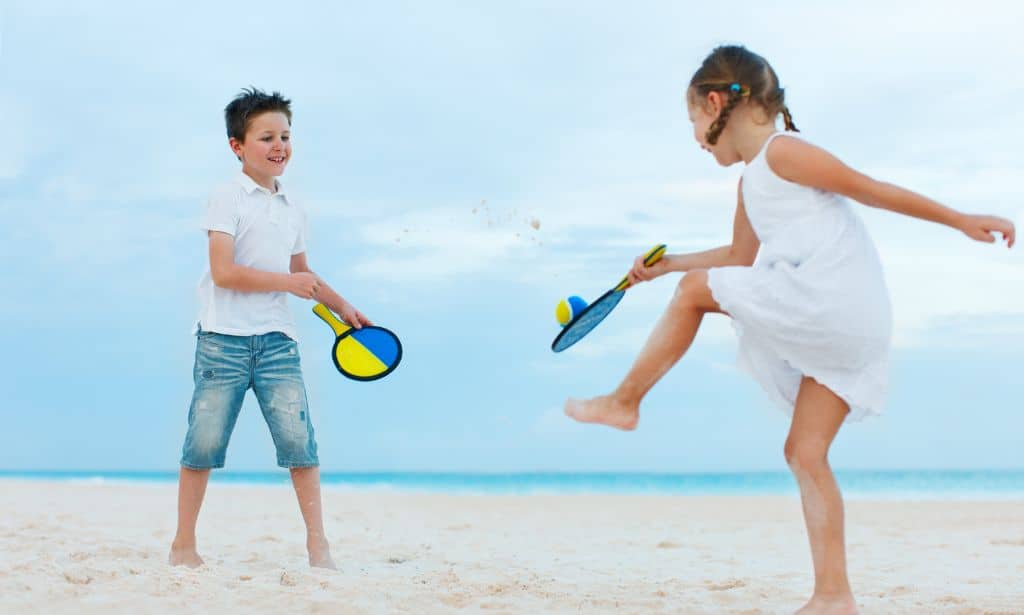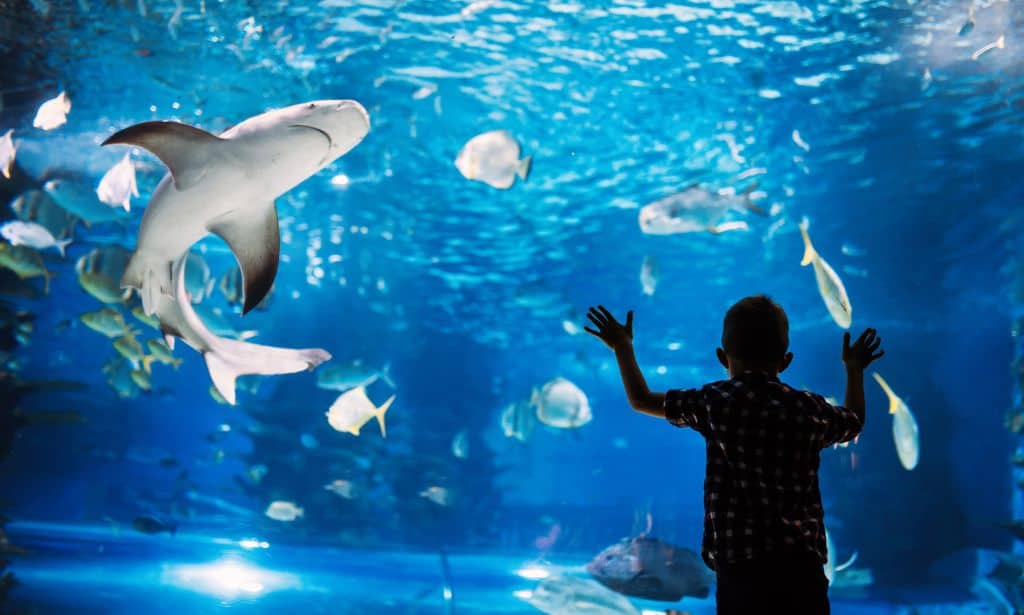A trip to the beach always psychs up the kids because they know they will have the time of their life. But have you ever considered turning these beach excursions into a learning experience? That’s right! The beach offers many educational activities besides the fun sand and water games.
Educational beach activities include studying ocean tides, comparing sea creatures, and math concepts such as shapes, sizes, and counting. In addition, artsy sand activities, like collecting shells, drawing, and building structures, will help build their cognitive and motor skills.
These activities can further be broken down into fun and engaging tasks to help kids learn about the ocean and its surroundings.
- How Do You Plan a Vacation Where Kids Can Learn?
- Learning Activities You Can Do At The Beach
- 1. Explore and Learn About the Environmental
- 2. Learn About Sea Creatures Through Rock Pool Explorations
- 3. Explore Strand Line and Make Discoveries
- 4. Math Through Discovering Shells
- 5. Language Skills by Writing in the Sand
- 6. Seaside Litter Pick-Up to Keep the Environment Can
- 7. Do a Biodiversity Study
- 8. Building Bathyscopes
- 9. Creating Sand and Pebbles Art
- 10. Practicing Motor Skills
- 11. Teach them About the Ocean
- 12. Taking Kids to Beach Tours and Exhibits
- 13. Spotting Beach Visitors
- 14. A Beach Scavenger Hunt
- 15. Imitating Sea Creatures
How Do You Plan a Vacation Where Kids Can Learn?
Planning a beach trip to help kids learn means you must include elements that normal trips do not have. For successful planning, involve your kids and take them through the scheduled activities, including the importance of educational activities. Also, consider disclosing the location and accommodation for beach vacations away from home.
Some of the things you can do before the trip include;
- Research available beach activities and their educational relevance.
- Create a list of must-haves and stick to it
- Plan your budget
- Ask for help if you’re overwhelmed
- Find a children-friendly beach
- Remember to pack the necessary beach essentials.
If you’re unsure about what to pack, read this article about beach essentials for an extensive list.

Learning Activities You Can Do At The Beach
Kids learn better when they explore new places. Therefore, take advantage of the beach trips to implement the following educational activities.
1. Explore and Learn About the Environmental
Numerous creatures and plants are unique to your location, and some are only available at the beach. So, take your kids along the shore and help them identify the difference between the beach and the home environment. For example, they’ll check the dunes, marshes, and surrounding plants while learning about the beach’s history.
Similarly, they’ll learn about sea shells and their relevance to the beach environment. The shoreline walks also allow kids to collect sand samples, shells, or rocks for educational activities like counting and color comparison. While you’re at it, explain why they should take care of the beach for future generations.
2. Learn About Sea Creatures Through Rock Pool Explorations
If the beach has a rock pool, that’s a great opportunity to explore “under the waves”. The rock pool explorations are easier and safer for your kids because they’re enclosed and manageable. However, remember to carry a net and a bucket to help find the flat fish and rocks on the sea floor.
The best time to explore rock pools is after the tide goes out or after a rain storm. Storms usually deposit many creatures in rock pools, making it the perfect time to explore and learn. Some animals to expect include crabs, shrimps, mollusks, and snails.
During exploration, teach your kids how to properly treat sea creatures and their habitats. That way, they’ll avoid harming the sea animals and maintain the beach’s beauty for years.
3. Explore Strand Line and Make Discoveries
The strand line is where the tide comes up, depending on the beach. On some beaches, this could only be a few paddles away, while on some, you would have to take a short boat ride to reach it. Exploring this line will teach kids about water pollution, tide movement, and its relevance.
Therefore, take this time to discuss how the tides are formed, especially if the strand line includes artificial and natural elements. Teach your kids the difference between seaweed and debris, and ask them how each item affects the ocean.
However, artificial items may contain dangerous items like syringes and blades. In fact, the National Ocean Service includes shoreline debris as one of the dangers at the beach. So, be careful and warn your kids not to touch debris without supervision.

4. Math Through Discovering Shells
The kids will definitely enjoy discovering sea shells if they love collecting souvenirs, visual descriptions games, or the hiking games described in this article. Moreover, encouraging kids to collect shells helps in nature study. The kids identify and categorize these shells based on their characteristics, including colors, surface smoothness, and shapes.
Explain to them what the shapes mean and what they represent. In addition, use the shells to teach math topics, such as counting, measurements, and symmetry patterns. Therefore, consider carrying a bag to collect shells and other shoreline treasures on your next beach trip.
5. Language Skills by Writing in the Sand
Communication is essential in everyday life, and where best to practice than at the beach! Your kids will enjoy scribbling in the damp sand and watching as the sea waves erase everything. In fact, if your kids are learning to write or are conversant with letters, this activity is great practice for the alphabet and numbers.
To practice speech, hand your kids a stick and have them write down words as they spell aloud. That improves their memory and hand-eye coordination skills. Furthermore, the kids can learn to send SOS help messages at the beach as a safety precaution. Who knows when they’ll need that skill?
6. Seaside Litter Pick-Up to Keep the Environment Can
While having fun at the beach, teach your kids to take care of the environment. Kids may notice the litter around them, so use this opportunity to talk about its effect on the environment, the sea, and sea animals.
Better still, bring gloves and trash bags, and take time to clear litter. Cleaning the beach teaches responsibility and environmental awareness, plus it’s a fun bonding activity. However, ensure proper gloves to keep the little hands safe and prevent infections.
With all the environmental degradation today, mother earth can use all the help she can get, including from kids.

7. Do a Biodiversity Study
Biodiversity study seems complex, but it is a basic observation tool that marine scientists use to identify organisms in an area. What’s more, you dont need high-tech equipment for this activity. When packing for a beach trip, you’ll only need hula hoops for yourself and your kids.
You’ll use the hula hoops for quadrant sampling by sectioning areas of interest. Afterwards, the kids will count the distribution of slow-moving and non-moving organisms within the identified area.
To get started, identify a spot, then throw a hula hoop. Now, identify and count organisms within the hula hoop. Remember to have a notebook, paper, and pen so your kids can tally the results.
Combine the data collected to identify the number of organisms you have discovered. Use visual elements like graphs for kids to visualize their findings and practice graphical skills.
8. Building Bathyscopes
A bathyscope is a tool for observing underwater from land or a boat. Your kids will ask if they can see ‘the little mermaid.’ The best way to answer their questions is to teach them how to build bathyscopes.
This device eliminates the glare off the water surface so you can see everything underneath. If you have time, you can build it using household materials. They will have fun looking at shells and rocks.
9. Creating Sand and Pebbles Art
Kids always have an eye for pretty things. Help them find funny-shaped, colorful, and flat pebbles for beach games. Toddlers can practice stacking skills using flat pebbles. Additionally, make it competitive and reward those who stack their pebbles higher or finish faster.
Alternatively, carry brushes and paint for pebble art lessons. They can paint shapes on the rocks or color them. What’s more, my article on drawing and memory explains how this activity helps children improve their memory and creativity, so be sure to check it out. Older kids can try making mandala patterns out of the sand.

10. Practicing Motor Skills
Considering the vastness of the space during low tides, encourage activities that build their motor skills and muscle development. For example, running, building, swimming, and climbing, especially if they are still young.
Allow your kids to run across the space while you closely watch them. In fact, why not tie a ribbon or cloth to mark the finishing line for a mini-competition?
It is a fun educational activity, but you must be on the lookout for rising tides. Additionally, ensure you have floaters and protective wear for all your kids before you start this activity.
11. Teach them About the Ocean
Another fun educational activity is teaching the kids about the beach. After all, that’s where you’ll spend most of your weekends and summer holidays. In addition, kids will be curious about the massive waves, tides, and marine creatures. So, why not turn that curiosity into a teachable moment?
Teach them how to use their eyes and ears to understand their environment. For example, illustrate how the gravitational pull of the moon and sun on the water causes tides. Also, teach them how to stay out of danger by learning the movement of marine animals.

12. Taking Kids to Beach Tours and Exhibits
Once you have taken your kids through all the other fun activities, you can drive them to a beach tour or exhibit. Beach tours often allow you to see the different parts of the beach away from the shore.
- Beach Exhibits
Coastal museum exhibits are great for learning more about aquatic life. The kids learn the history of sea creatures, including perspectives based on scientific knowledge. However, research beaches that offer beach exhibits and book yours in advance because they’re not available at every beach.
- Ocean Aquariums
Consider taking your children to an ocean aquarium to learn about creatures located deep in the sea. These places show fish and wildlife native to the geographical area, giving a clearer view of the sea life.
13. Spotting Beach Visitors
Kids will be very excited to spot visitors in the form of unique aquatic life unwinding at the shore. For example, you rarely spot a leatherback sea turtle at the beach, and that’s an unforgettable experience for your kids.
You can teach the kids to follow tracks coming from the ocean and returning. Involve your kids in talking to specialists around the beach so they learn about the species of sea turtles, seals, or sharks. You can also spot seals and shoreline birds that leave tracks on the sand.
14. A Beach Scavenger Hunt
A scavenger hunt is an exciting activity that allows little kids to learn about focusing on their natural surroundings. You can use an activity book to help you find a great scavenger hunt. Kids who love activity books will enjoy a beach scavenger hunt. Check out this scavenger hunt book that’s filled with tons of scavenger hunts for your kids to enjoy at the beach, park, farm, and more.
Alternatively, create your scavenger hunt by making a list of things they need to look for and setting them up for an adventure. For example, can they locate seaweed or marine debris? After the activity, check their collections to determine how they catch up with the rest.
15. Imitating Sea Creatures
Kids are very creative, especially when mimicking people or animals. So, if your child enjoys mimicking cats, dogs, and other pets in your home, they’ll have more options at the beach.
For example, ask them to imitate the sounds or movement when they spot a gull, fish, or crashing wave. Encourage such dramatic plays to stimulate imagination and help enhance observation skills. What’s more, you should join your babies for a wholesome all-around experience.
Educational beach activities offer unforgettable learning experiences. Even better, you dont have to worry about missing out on the fun. Not sure what to do to make the beach fun? Check out this article, where I explain how to make the beach fun and educational.




